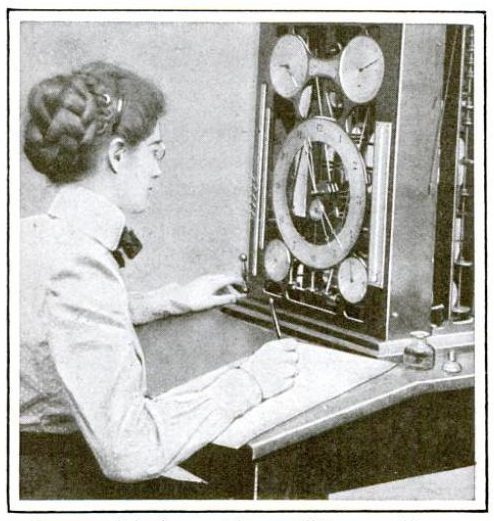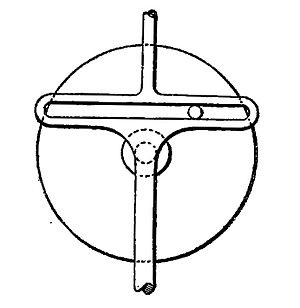 A hundred years ago, this scientist is predicting the tides with the help of this tide predicting machine, described in the March 1921 issue of Popular Science.
A hundred years ago, this scientist is predicting the tides with the help of this tide predicting machine, described in the March 1921 issue of Popular Science.
The machine is an analog computer, one version of which was fittingly dubbed Old Brass Brains. The first such machine was designed by Lord Kelvin, who noted that the tide at any particular location was the sum of a number of sinusoidal functions in the form:
Prior to the advent of the digital computer, such a computation would be laborious, especially if one needed to repeat it to calculate the tide minute by minute. But with the analog computer, once the various constants were set, it was simply a matter of turning a crank and seeing what the tide was at any given time.
Each term of this equation is represented in the machine by a wheel similar to the one shown at the left. As the wheel turns, the piece in the middle moves up and down, and the distance moved up or down is proportional to the cosine of the angle at which the wheel is turned. By changing the position of the pin and the size of the wheel, the various constants in the equation are taken into account. The output of this wheel is then linked by a pulley to the next wheel.
Replicating such a machine in its entirety would, of course, cost millions of dollars in precision machining. However, the advanced student could create a very impressive science fair project by constructing a part of such a machine, namely one of these wheels, or perhaps even link two wheels together. With information from the WIkipedia articles and Popular Science article linked here, a very impressive exhibit could be created.


